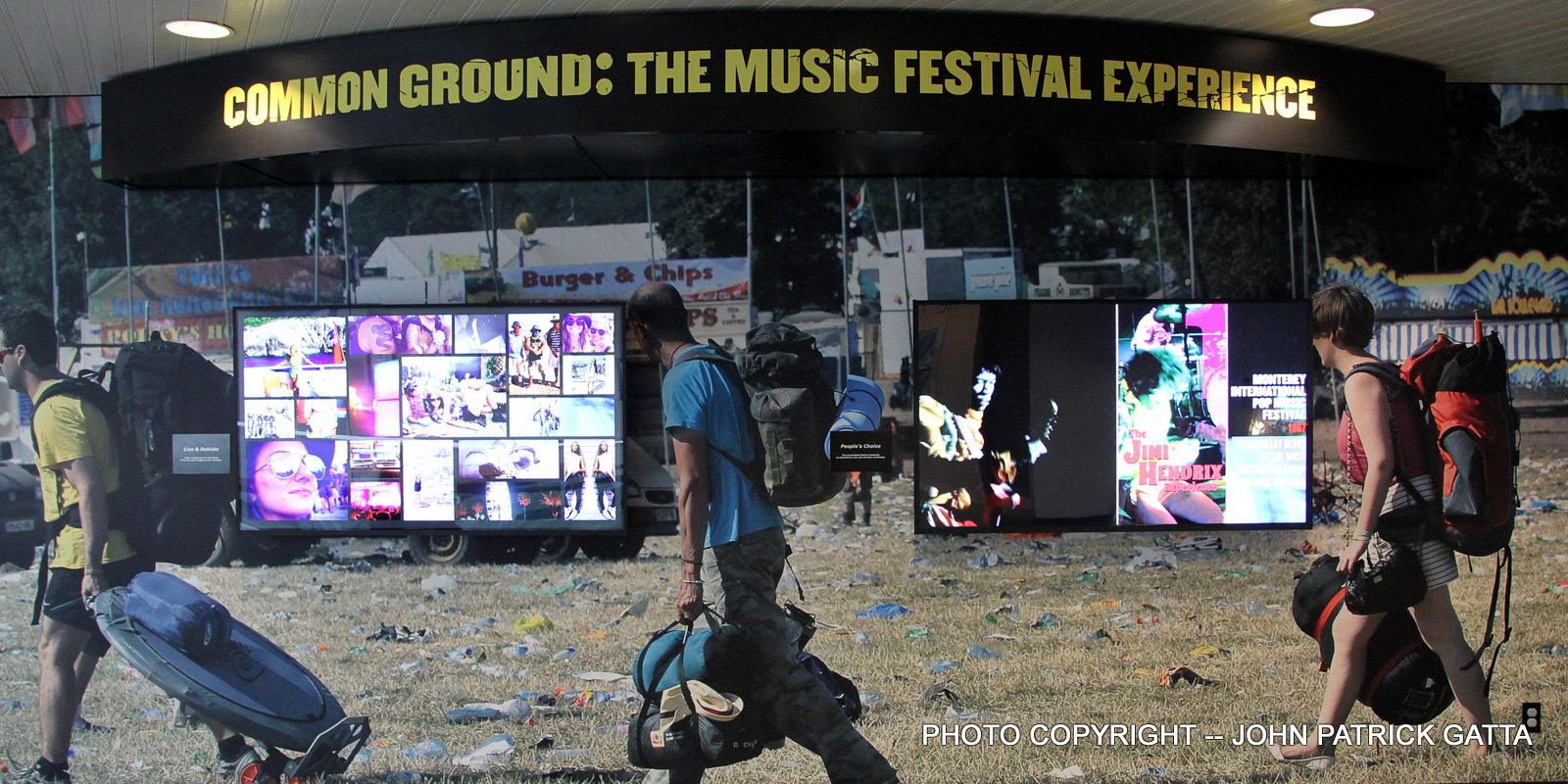
As many of us prepare to create new experiences at this year’s music festivals, the Rock and Roll Hall of Fame and Museum chronicles their history in the exhibit “Common Ground: The Music Festival Experience,” which runs through Jan. 31, 2015.
“The title captures the spirit of a music festival,” said Meredith Rutledge-Borger, Associate Curator at the Rock Hall, “with all the diversity of types of festivals, performers, audiences, locales.
“There is an uncommon commonality in the music festival experience, a sense of community, fellowship and transformation that you really don’t find elsewhere.”
With a combination of photographs, artifacts and short documentaries the first level of the exhibit runs through the festival’s beginnings and on through to the present day. Each section presents a different period with the focus going to events such as Newport, Monterey Pop, Isle of Wight, Live Aid, Glastonbury, Bonnaroo and Electric Daisy.
“As a curator I think it was useful to have been to lots of different kinds of festivals. It helped me to identify the common ground, if you will, that music festivals share, the kinds of experiences and challenges that all festivals present.”
The final result encompasses any type of music fest from touring extravaganzas (Lollapalooza), one-day events (Wattstax) and multi-day excursions (Coachella).
“The one defining quality that we looked for was that it was held outdoors. But we even broke that rule because we started out with the Spirituals to Swing concerts of 1938-39, which were held at Carnegie Hall. Because of their seminal importance — those concerts really set the template for the revelatory, transformative festival experience — we felt they must be included.
She continued, “But we consider the Newport Jazz Festival in 1954 to be the first true music festival of the modern era.”
Using online voting, the Top 10 music festival performances of all-time including Jimi Hendrix at Monterey, Queen at Live Aid, Bob Dylan at Newport and Nine Inch Nails at Woodstock ’94 — are shown in a video montage at the entrance of the exhibit as well as a video link.
Although the Museum cites music festivals’ origins in the United States, grand scale events such as Woodstock in 1969 or International Pop fests in Atlanta and Texas in 1970 gradually disappeared from the American landscape. Europe took the lead with a number of events including Glastonbury, T in the Park, Big Day Out, Sonar, Rock am Ring, Monsters of Rock, Roskilde, Pukkelpop and All Tomorrow’s Parties.
Over the past decade the U.S. industry exploded and now presents hundreds of events that cater to a specific genre – bluegrass, heavy metal, electronic dance – or offer an eclectic lineup.
Asked why the market changed Rutledge-Borger said, “America began to embrace music festivals when a successful business model was established. When it was demonstrated by fests like Lollapalooza that huge, diverse groups of people could come together safely to enjoy music with positive outcomes artistically and financially, music festivals came to be seen as a much more viable enterprise by the American music business and audiences.”
For those making the journey to any of the festivals around the world yet aren’t able to check out “Common Ground” they can still be involved with the exhibit. Moving beyond the Museum doors, the Rock Hall invites this year’s festivarians to send their photos through social media. They’ll be displayed on a video screen at the exhibit’s entrance. They should be sent to twitter with the hashtag #myrockhall, while images uploaded with individual festivals’ hashtags will automatically be posted.


No Comments comments associated with this post